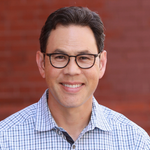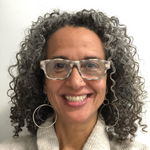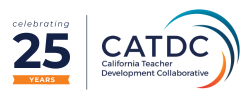Trickle-Down Equity and the B in DEIB

How can you tell if your organization’s DEIB work is performative or transformative?
For some organizations, especially those new to diversity, equity, inclusion, and belonging work, there can be an urgency to “arrive.” DEIB statement? Check. Employee resource or affinity groups? Check. Recruiting for diversity? Check. Training on microaggressions and implicit bias? Check. Donate to and establish relationships with local, sustainable BIPOC and LGBTQIA+ businesses? Double check.
While each of these elements is critical to a successful DEIB program, without a culture that also addresses individual needs, there’s a high risk that the time, energy, and effort spent on initiatives may dissolve into the mist of performative DEIB work. Like the concept of “trickle-down economics,” trickle-down equity may never reach members of the minoritized groups who could most benefit.
In fact, a 2019 Harvard Business Review article revealed that 40% of employees feel physically or mentally isolated at work, which results in lower organizational commitment and engagement (which, as we know, leads to lower productivity, higher turnover, and the subsequent costs of hiring and training). According to the HBR report, a sense of belonging is the top factor in determining engagement. In numbers, high workplace belonging amounts to a 56% increase in job performance, 50% drop in turnover risk, and 75% reduction in sick days.
So, how does belonging typically play out? Many organizations espouse the arrival of a superstar DEIB practitioner only to watch them leave 12 or 18 months later under unfortunate circumstances. What circumstances led to their departure, and what are the impacts on the practitioners and the organizations they leave behind?
Many DEIB practitioners are subjected to a level of criticism and gaslighting (or Racelighting, as Dr. J. Luke Wood describes) not levied on other administrators. Statements such as, “We don’t have the budget to install all-gender bathrooms,” and “You can take Yom Kippur…or Eid…or Diwali…or Lunar New Year off, but you’ll be charged a vacation day,” belie efforts to create a more equitable and inclusive environment and may expose the organization’s DEIB aspirations for what they are: performative. While there may be fiscal reasons why “We can’t change the organization just for you,” the undertones tell a different story, more akin to “You’re not important enough to make the change or dedicate the necessary resources.”
So, how do you know where your organization stands?
Six Indications Your Organization’s DEIB Efforts May Be Performative
- There is only one official DEIB person compensated for the work
- Efforts exist to recruit for diversity, but not for retaining or sustaining
- The budget for DEIB work, initiatives, and programming is unclear or non-existent
- Time for DEIB-focused training is too limited and/or considered optional
- There is resistance to hosting DEIB climate surveys, dashboards, or equity audits
- HR is not involved in DEIB professional development or initiatives, but mainly enforces rules and provides benefits
Six Indications Your Organization’s DEIB Efforts May Be Transformative
- There is a DEIB Team representing a broad array of constituents
- There are clear and communicated plans around retaining and sustaining BIPOC employees
- There is a clear and robust DEIB budget that includes annual events as well as for training guest speakers and/or consultants
- DEIB training is prioritized and scheduled well in advance, focusing on the needs specific to the organization
- DEIB feedback is collected regularly using multiple platforms and then used to effect change in the institution
- HR actively participates in DEIB training and initiatives (as a potential influencer in belonging)
Organizations need to be willing to embrace discomfort over time and expect that the transformative process can be messy and nonlinear. And members of the C-suite and other senior administrators need not only engage in the work personally, but model what stumbling forward with vulnerability and humility can look like for others as well.
Critical Questions for Reflection
- What are the overriding systems that determine who has power in your organization?
- What is the lived vs. stated culture?
- What systems exist that support or disrupt systemic racism?
- What is the experience of the numerical minorities?
- Is there organization-wide accountability for learning and progress?
- Where is your organization investing money and time?
Introducing culture surveys to your school is critical in answering these important questions and providing powerful insights into the experiences of staff and students. And while numbers tell a data-driven story, it is only with the integration of the qualitative stories from individuals that we get the full, technicolor picture.
- What will your organization focus on specifically? What are you measuring?
- How and what do you plan to do with the results?
- How can you make the process transparent?
- Are there ongoing efforts to circle back and resurvey constituents?
The “B” in DEIB can be an effective litmus test for organizational accountability. If it doesn’t ring true, if people don’t believe they or their contributions matter, if they aren’t truly seen, heard, and respected, DEIB initiatives will likely feel performative. And, while organizations may feel it’s not prudent to “change everything” for an individual, individuals are the heart and hands of every organization. Finding ways to change the world of an individual not only helps them but can pave the way for attracting new employees and increasing chances for greater diversity in the future.
As it is, not all efforts, labor, and resources put toward DEIB work will have direct, positive results. But while the B for Belonging often appears last in line when citing Diversity, Equity, Inclusion, and Belonging, it ultimately may have the last say in assessing real change.

Anthony Witte is the founder of Witte’s End Diversity Consulting. He brings 20 years of experience as an educator, from teaching to director of diversity, equity, and inclusion. His graduate studies in Education, Equity and Social Justice from San Francisco State University ignited a passion for helping people from all backgrounds move from awareness to social action. He is a founding member of the San Francisco Equity Leaders diversity consortium, and a board member of the non-profit, People of Color in Independent Schools. He has presented nationally at educational conferences and co-authored Diversity Work in Independent Schools: The Practice and the Practitioner. Anthony lives in San Francisco with his family and enjoys jazz, cycling, and tennis (while his knees hold out).

Josephine Saunders has been an educator for over 25 years, in public school, international school and independent schools. She has served in schools in the UK, Boston , Washington DC and San Francisco. She is currently the Director of Diversity Equity and inclusion at San Francisco Day School and serves on the Advisory Board at Breakthrough San Francisco. She is passionate about working and developing educators and has worn many hats over the years. Her previous roles have included preschool to 8th grade teacher, Lower School Director, New Service Teacher Coach, supporting teachers through the BATTI (Bay Area Teacher Training Institute) program as a supervisor and an Equity and inclusion Coach. Josephine loves to share her passion for learning, growing and healing in community.

Kali Baird has been an independent school educator and administrator for over thirty years. She is currently Director of Diversity, Equity, and Inclusion and Director of Teaching and Learning at San Domenico School. She has also been on the board of the Northern California chapter of POCIS, People of Color in Independent Schools, for two yearsand, this year is serving as the Vice Chair. In addition to a strong background in classroom teaching across many grade levels and subjects, Kali also supported the integration of technology at San Domenico as their director of Educational Technology. Her time in the classroom and in administration continues to highlight for her how valuable and vital it is to have, at the core of every community, a focus on fostering a true sense of belonging.
